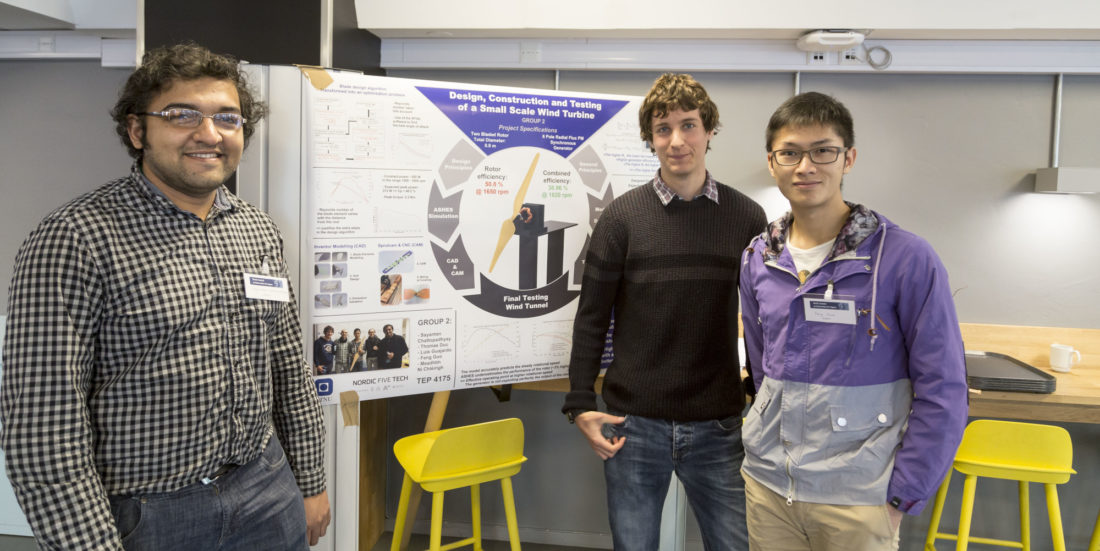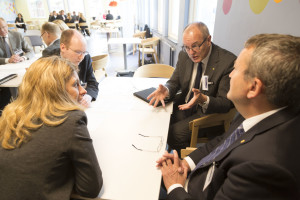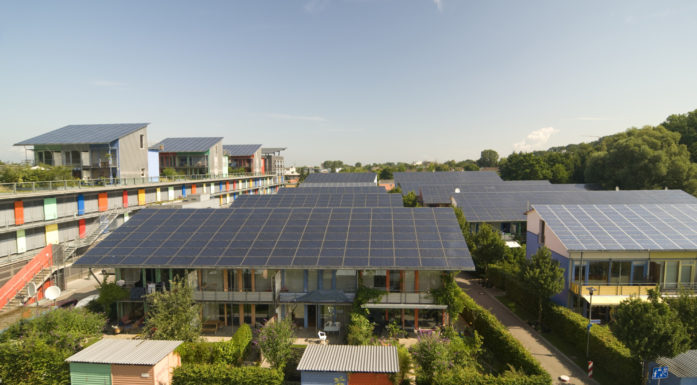Five Nordic universities look into the crystal ball
The Nordic Five Tech, an alliance of the leading technical universities in the Nordic countries, celebrated its tenth anniversary this June with a high level summit to plot a strategy for its next decade. There was talk of horses, cars, and swimming robot snakes.
INNOVATION: Ask Tor Ulleberg, chief of innovation, research and technology for Statoil ASA what his company thinks about collaborating with universities, and he has a ready answer that has to do with horses, cars, and swimming robot snakes.
Nordic Five Tech
The Nordic Five Tech alliance (N5T) is made up of:
- Aalto University
- Chalmers Univbersity of Technology
- DTU - Technical University of Denmark
- KTH Royal Institute of technology
- NTNU - Norwegian University og Science and Technology
N5T was established in November 2006 and is based on Nordic values and a common mission to serve society through technological and scientific development and the education of highly competent engineers. The goal of the alliance is to create synergy in education, research and innovation via their shared and complementary strengths.
“Sometimes we ask for a faster horse, but what we really need is a car,” he told a room full of Nordic university and industry leaders. Universities “give us what we really need, and not what we think we want. We need you guys on the team.”
Ulleberg’s presentation on how Statoil is working with NTNU’s Centre for Autonomous Marine Operations and Systems (AMOS) and its spin-off company Eelume, along with Kongsberg Maritime to develop swimming robotic snakes was just one of dozen presentations at the Nordic Five Tech Summit hosted at NTNU on 7-8 June. The meeting celebrated the alliance’s tenth anniversary but also challenged participants to think strategically about how the alliance can make a difference over the next 10 years.
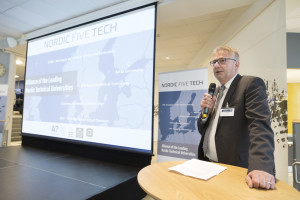
Tor Ulleberg, Chief of Innovation, Research and Technology, Statoil ASA, talks about innovating through multi-partner collaboration. Photo: Thor Nielsen
“This is all about impact,” said NTNU Rector Gunnar Bovim during one of the breaks. “Universities have a social mission, an obligation to society to help bring about change. This is partly about educating good students, partly about having good research projects and partly about finding ways to get this knowledge out into the world.”
Helping companies think out of the box
Ulleberg told the group that the collaboration on the swimming robotic snakes could provide enormous cost savings for the company. While North Sea oil was once pumped up from the ocean floor via oil platforms, the industry has shifted to subsea installations. But these subsea installations need constant surveillance.
“Right now Statoil uses heavy underwater vessels and boats” to inspect these facilities. If a swimming robotic snake could take over what is essentially “janitorial work”, it could result in enormous cost savings, he said, as well as cut CO2 emissions. Yet these swimming snakes wouldn’t be possible without the partnership: AMOS with its technical expertise, Statoil with its real-time laboratory, and Kongsberg Maritime with its expertise in systems integration, he said.
But more important for Ulleberg’s Nordic Five Tech audience is the example the collaboration presents for universities. Businesses “want radical new solutions, but we don’t always think in terms of radical new solutions,” he said. “We know what the challenges are, we can articulate those challenges, but we have to make alliances to find radical new solutions. That is the name of the game.”
For its part, industry also needs to recognize that some early phase ideas developed in academia may not come to fruition, he said. “With early phase development, we have to take a risk,” he said. But given the potential benefits of succeeding, “we have a tolerance for failure,” he said.
A student revolution in entrepreneurship
Another section of the summit focused on case studies of how universities can help their students develop entrepreneurial skills, including a presentation by Myung-Gi Suh, Global Partnerships Coordinator, Aalto Ventures Program, and Henni Roini, Program Manager for Startup Life.
The Aalto Ventures Program has had more than 1880 students in its first 3.5 years, while Startup Life, which helps Aalto students get paid internships in the Bay area of California, has sent more than 100 interns to the USA.
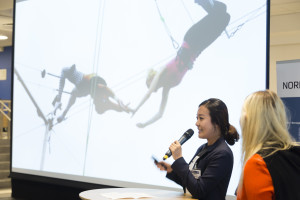
Myung-Gi (“MJ”) Suh, Global Partnerships Coordinator, Aalto Ventures Program (AVP), and Henni Roini, Program Manager, Startup Life, talk about creating a student-driven innovation and entrepreneurship ecosystem. Photo: Thor Nielsen
Suh challenged summit attendees to support efforts that promote entrepreneurship among students. “We believe the student-driven bottom up revolution is only possible with unlimited, top-down support,” she said.
Joint master’s programmes
Another aspect of developing partnerships was demonstrated by an international team of master’s students who presented a poster on their research on small-scale wind power.
The five students are all part of the Nordic Five Tech Joint Nordic Master’s degree programme in Innovative Sustainable Energy Engineering. They have just finished their first year at NTNU and will complete their degrees in Denmark, at DTU.
The students, who came from India, Mexico, Ireland, China and France, said they were attracted by the idea that they could experience two different Nordic countries while doing their degrees. Feng Guo came from China because of the reputation that Norway and the other Nordic countries have in promoting sustainable development.
Guo said he took a bachelor’s degree in China in thermal power generation, which typically relies on fossil fuels to heat water to make steam, which then turns turbines. “But it is really polluting,” he said. “I really wanted to do something in renewable energy, so I decided to study in this marvelous place.”
He says he looks forward to returning to China, where knowledge about renewable energy is critically needed. “Climate change is really influencing people’s lives there,” he said. “I want to share what I have learned.”
